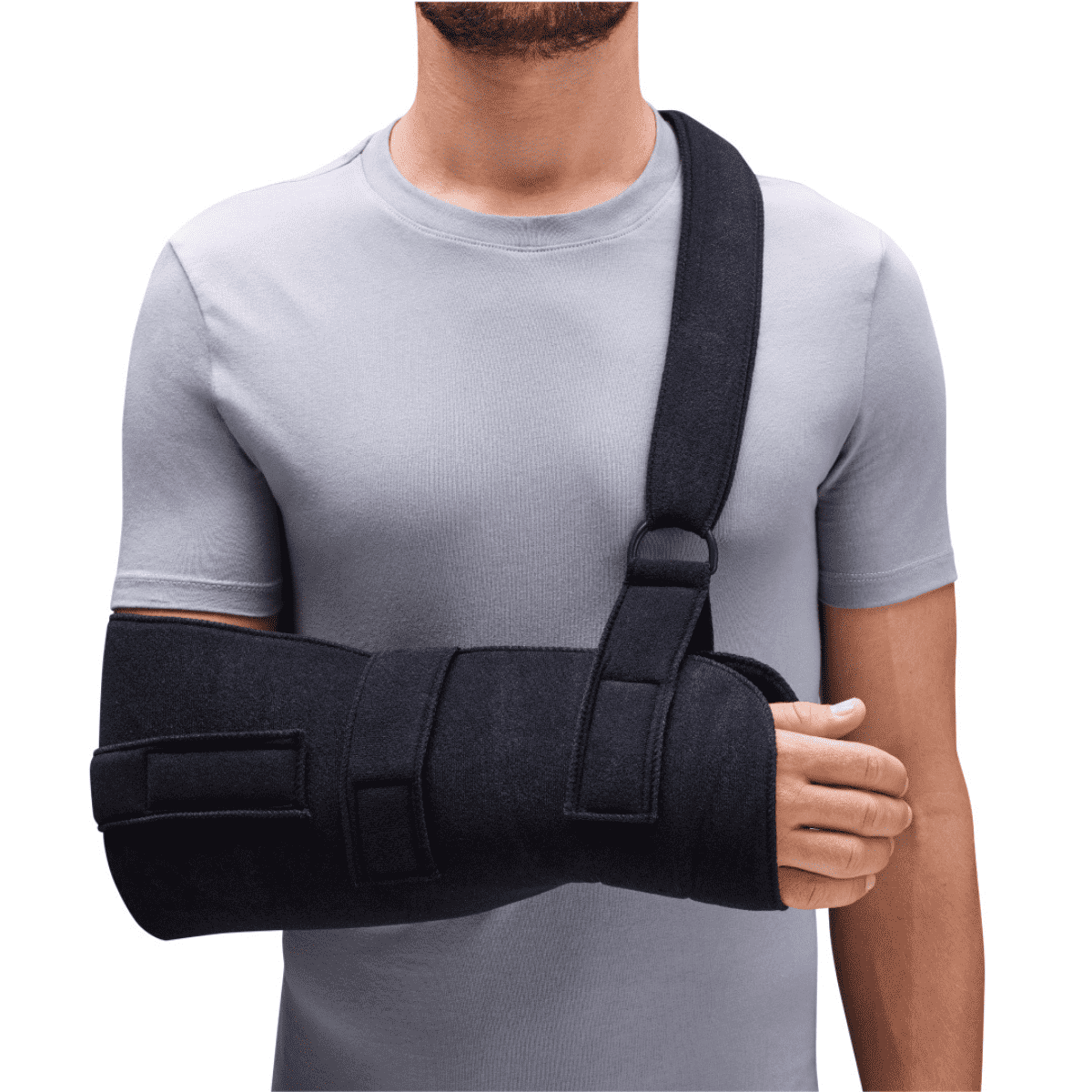Tennis elbow is an overuse injury affecting the lateral (outer) epicondyle tendon. When you use the tendon too much during physical activity or don’t give it sufficient time to recover, the tendon becomes inflamed, stiff, and painful, making movement difficult. While the condition often resolves on its own, you should still take some steps to aid recovery and reduce the risk of it becoming chronic. So, here’s how to treat tennis elbow.
Ice
Ice is a great way to reduce inflammation while the injury is still fresh. Simply apply an ice pack to your elbow for 15 minutes every couple of hours—this should also help with some of the pain. Please note that you should not continue icing an injury after 3 days—at that stage, it’s unlikely to help with any remaining inflammation, and you may cause undue muscle stiffness.
Wear a tennis Elbow brace
b:joynz elbow support
The b:joynz elbow support combines compression knit fabric and gel pads to relieve tennis elbow pain.
They work together to activate the muscles and relieve pressure on the tendon. Additionally, compression knit boosts circulation through the area, assisting the healing process and reducing inflammation.
As the brace provides protection, it will also be a great addition to your rehabilitation routine and support you as you return to regular physical activity with less risk of re-injury.
Rest and activity modification
Since overuse injuries stem from overuse, it’s essential to rest them!
Note: You don’t have to completely avoid using your elbow as it heals. This can be very difficult and will result in strength loss, making re-injury far more likely. Instead, try to rest the elbow for a day or two, then gradually get it moving again with a few activity modifications to avoid unnecessary agitation. The key is slowly reintroducing loads and range of motion as it heals without overwhelming the healing tissue.
- Lift things with your thumb or palm facing up – these positions use your wrist flexor muscles rather than your wrist extensors, to which the lateral epicondyle tendon is attached.
- Limit repetitive movements.
- Avoid carrying things with the injured side. This applies to heavy and light items since even a light load (e.g., a small shopping bag) can aggravate tennis elbow pain if carried for an extended period.
- Use your other hand to lift, push, or pull things if possible.
Mobility exercises for tennis elbow
As your elbow improves, your clinician will likely recommend a few physiotherapy exercises to assist recovery.
Wrist flexion and extension stretch
- For wrist flexion, lift your arm with your elbow straight and your palm facing down. For extension, your palm should be facing up.
- Use your free hand to lightly push your hand downwards until you feel a stretch in the wrist or forearm area.
- Hold the stretch for about 30 seconds before releasing it and completing two to three repetitions. If you feel tension through your forearms, do this stretch in the morning and evening and a couple of times in between.
Elbow flexion and extension stretch
- Stand up straight with your arms down by your side.
- Turn the palm of your affected arm forward.
- Bend the elbow until you can touch your fingertips to your shoulder.
- Relax and repeat 5 times, and do this stretch a few times a day.
Strength Exercises
Towel crush
A weak grip is one of the main factors contributing to tennis elbow development and pain after you get the injury. So, working on your grip is essential to help you recover and avoid re-injuring the tendon.
- Roll up a medium-sized towel into a tube (small enough that you can grip it without dropping it).
- Slowly try to close your hand into a fist, crushing the towel.
- Hold the crush for 10 seconds, then release.
- Repeat 10 times in 3 sets.
Dumbbell supination twists
This exercise works your forearm supinator, a large muscle that helps you twist your wrist and is involved in many of the movements that can cause tennis elbow.
Note: While you should eventually work your way up to doing this exercise with a dumbbell, start with no resistance to see how your tennis elbow responds. You can then progress to holding something light, like a half-filled water bottle.
Towel wring
- Soak a towel in water until it’s completely damp and roll it up into a cylinder.
- Grasp the towel with both hands in an overhand grip.
- Wring the towel out by twisting your left hand upwards and the right hand downwards. To avoid a mess, do this over a tub, sink, bucket, or in your backyard!
- Complete the movement, switching directions alternatively for 30 seconds.
- Repeat 3 times with a 30-second break in between.
How to treat tennis elbow: the takeaway
Tennis elbow will often go away on its own, but you should still take the necessary precautions to assist and speed up recovery. These include resting the joint right after the injury, modifying activities, slowly reintroducing everyday movements, wearing a brace, and doing rehabilitative exercises.










